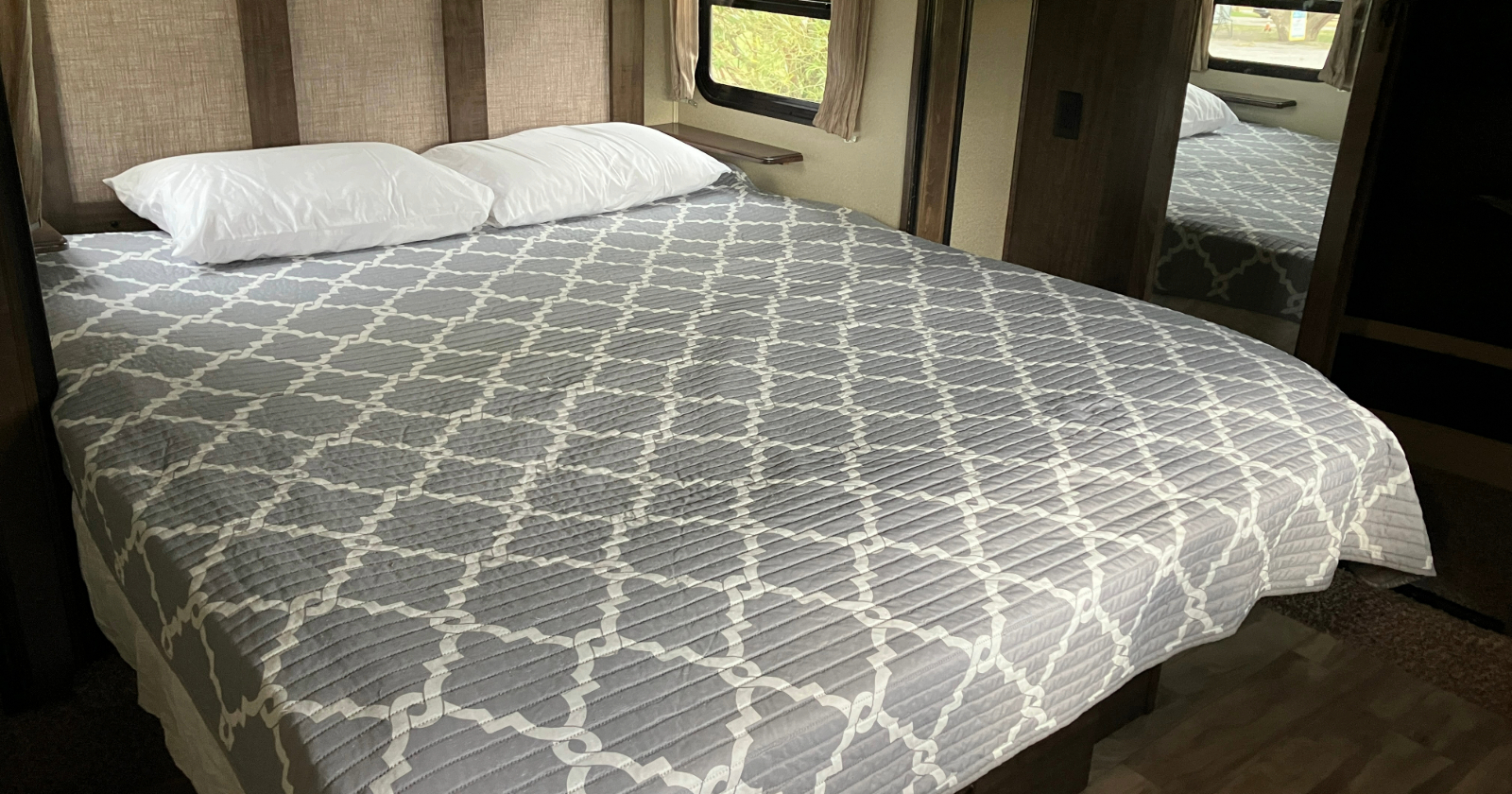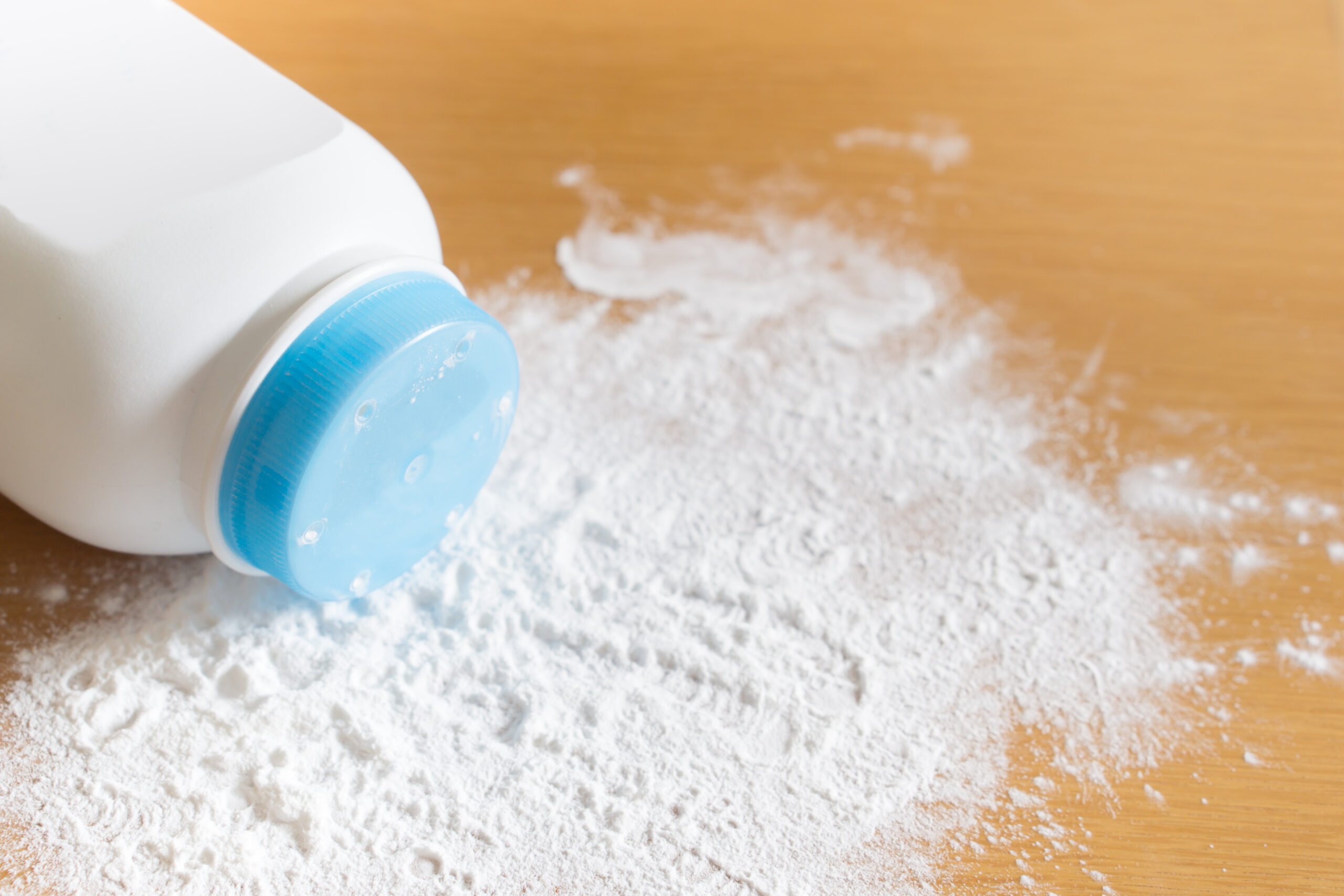Mold is the ultimate enemy of every RVer who opts for RV storage during the winter. Even if you live in a dry climate, an RV interior can trap moisture and become a breeding ground for mold, pests, mildew, and other blights. This article explores ways to prevent these issues, focusing on the use of dehumidifiers and other strategies to maintain a dry environment inside your stored RV.
Note: While this article focuses on preventing mold during storage, it’s important to address winterization, battery care and pest control as part of your overall storage plan. Additionally, for safety reasons, we advise caution when using electric dehumidifiers unattended, particularly in RVs stored away from home.
Dehumidifiers: Pros and Cons
If you’re worried about humidity and moisture within your RV, you might think that a dehumidifier is the solution. And you could be right! However, these devices have limits and are not always the best option for long-term storage.
Before we dive deeper, let’s take a look at the two main types of dehumidifiers you might use: Electric models and desiccants/moisture absorbers. They each have their own pros and cons, and one type may work better for your specific approach to RV storage.
Electric Models
Electric dehumidifiers are usually the first thing that comes to mind when you hear this term. These are the devices that filter the air and extract excess moisture into a built-in tank. Electric models come in all shapes, sizes, and performance levels. Some are powerful enough to clear an entire RV, while others are only suited to a small bathroom.
In the short term, electric dehumidifiers definitely do work. You can literally see how much moisture they pull out of the air! But if you’re keeping your RV in storage for several months, you’ll have to have a way to power these units. Batteries will only take you so far.
In addition, electric models have filters that need to be cleaned or replaced on a regular schedule. If the filters become clogged or overloaded, they won’t be able to remove moisture nearly as well. You’ll also need to empty the water tank from time to time.
Cautionary Note: While electric dehumidifiers are useful, leaving them running unattended for extended periods in an RV can pose risks. Ensure that any electrical connections are safe and reliable, and consider the potential for mechanical failures. Regular checks are recommended to prevent any hazards associated with long-term use, especially when your RV is in storage and not under constant supervision.
Desiccants/Moisture Absorbers
Another solution is to place moisture-absorbing substances around your RV. These are designed to attract airborne water particles. Desiccants like this do not require a power source, and you can place them around areas that are likely to accumulate water.
Of course, these are not a miracle cure either. There’s a limit to how much moisture they can absorb, and they will eventually become useless if they are not replaced. If you can check on your RV during the storage period, you can refresh these desiccants as necessary. But if it’s in a distant storage facility, that may not be an option.
If you want to use desiccants, try some of the following substances/products:
- DampRid Fresh Scent Hanging Moisture Absorber
- Arm & Hammer Clean Burst Moisture Absorber and Odor Eliminator
- O2frepak Food Grade Silica Gel Packs
- Activated Charcoal Odor Absorber
Mold Prevention Checklist for RV Storage
Now that you have a better idea of your options, it’s time to prepare your RV for storage! Be sure to take your time during this process because you’ll get much better results if you’re thorough.
1. Empty All Cargo From Your Camper
To begin, take all of your belongings out of the vehicle. Although you can technically leave things in your RV while it’s in storage, it’s usually better to start with a clean slate. There’s also less of a risk that the cargo will be damaged if there’s a fire, water damage, vandals, etc. Once all of your cabinets and closets are empty, you can also see if there are any nooks that are noticeably damp.
2. Clean and Drain the Holding Tanks
Next, it’s important to drain all the water you can from your RV. You shouldn’t put it in storage unless it has clean and empty holding tanks! Any water that remains in the plumbing system can freeze and burst your pipes. In addition, it creates an inviting environment for mold and pests.
Dump your holding tanks and sanitize them with a mixture of bleach and water. Spray them down and give them plenty of time to dry out.
3. Blow Out the Water Lines
It’s also important to clear out your water lines so you can remove any remaining moisture. Even if the tanks are empty, your pipes may still be damp. To do this, ensure that all your faucets and valves are open. Then, attach an air compressor to your water line valve. Set the pressure somewhere between 30-50 psi and run it in short bursts until all the moisture is gone.
4. Remove Any Sources of Standing Water
Once your tanks and pipes are all dry, it’s time to turn your attention to the RV interior. There are certain places where moisture tends to accumulate. Check high-risk places like behind the toilet, underneath the sink, around the refrigerator, and in the corners of cabinets. Dry any damp patches you find and place desiccants or towels in the space to absorb future moisture.
5. Thoroughly Clean and Dry Everything
Now you need to clean out your vehicle. Bacteria, fungi, or other contaminants can get worse when they’re left to fester in RV storage. So be sure to thoroughly clean out your RV! Attack potential mold surfaces with bleach-based cleaning products. You should also wipe down all the surfaces and dry any wet spots when you’re finished.
6. Run a Dehumidifier/Place Desiccants Around the Vehicle
Now it’s time to use your dehumidifier/desiccant of choice! Place them in the areas where they will be most effective, such as near windows, cabinets, sinks, etc. If you’re using an electric dehumidifier, be sure to install a fresh filter before you place it in storage.
7. Cover the RV in a Breathable Tarp
Finally, don’t forget about the RV exterior! If it is left exposed to the elements for several months, you could get leaks through the seams and vents. Protect the RV with a high-quality cover, but ensure that it’s a breathable material. If it can’t let moisture out, the entire vehicle could become damp, and the internal humidity will be much worse.
Be sure to choose a cover that fits your specific RV, but a great all-purpose cover is the King Bird Travel Trailer Cover. It’s simultaneously waterproof and breathable, so it’s perfect for minimizing moisture.
Conclusion
Ensuring your RV remains mold-free during off-season storage requires a focused approach, primarily revolving around moisture control. Dehumidifiers and desiccants are your main allies in this battle. Remember, effective mold prevention in RV storage is not just about these tools but also involves comprehensive vehicle care, including safety considerations when using electrical devices. By following these steps, you can look forward to a mold-free RV ready for your next season of adventures.
Related Articles:




Sun Pac mildewcide / formaldehyde kills mold spores and insects in any RV or boat and lasts for months. If you already have mold damage Sun Pac’s formaldehyde gas will permiate the area and remove it . There is no need to take any other measures. Purchase at DK Hardware on-line, you will not regret it.